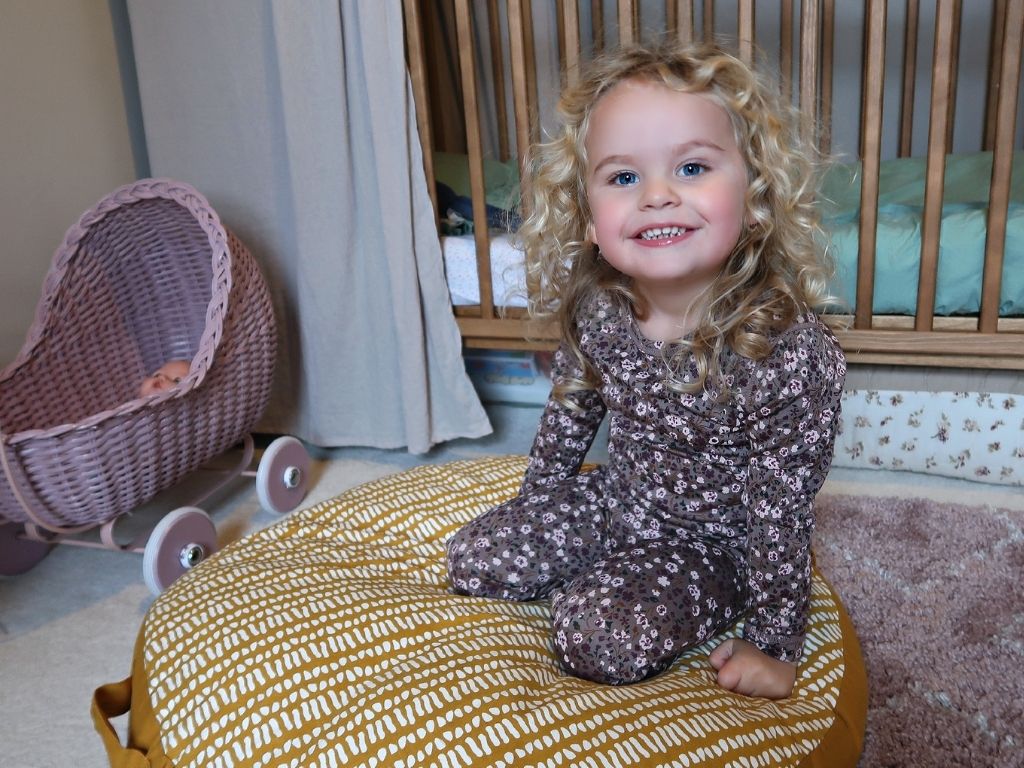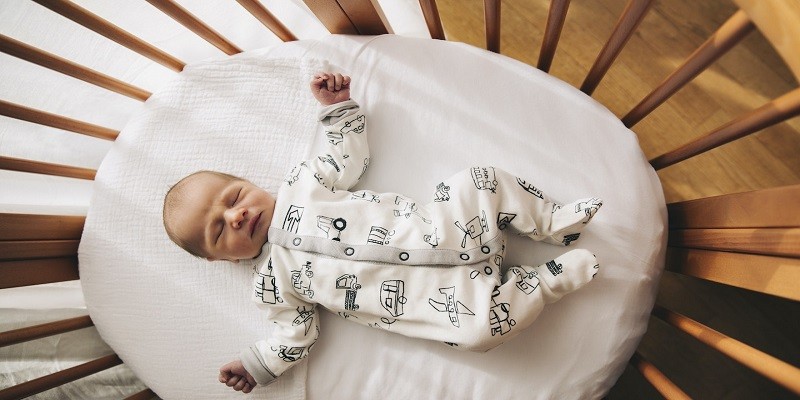Last Updated on January 15, 2025
To dress a toddler for sleep, choose soft, breathable, chemical-free fabrics like cotton and avoid synthetic materials. If it’s cold, add socks, a onesie, or footed pajamas.
Remember to check their body temperature by placing your hand on their chest, tummy, or back. Their skin should feel dry and warm. Remove a layer if they feel too warm and add a top layer if they feel cold.
Proper dressing for sleep can create a comfortable and conducive environment for your toddler to sleep peacefully through the night.

Credit: theparentingjungle.com
Choosing The Right Sleepwear
When dressing your toddler for sleep, it’s important to choose soft, breathable, and chemical-free fabrics such as cotton. Avoid synthetic materials that don’t allow for proper breathability. In colder temperatures, you can add layers like socks, onesies, or footed pajamas to keep them warm and cozy throughout the night.
When it comes to dressing your toddler for sleep, one of the most important considerations is choosing the right sleepwear. Opting for soft and breathable fabrics like cotton can help ensure that your little one stays comfortable throughout the night.
Cotton is a natural fabric that allows air to circulate, keeping your toddler cool during warmer nights. Unlike synthetic fabrics like fleece, cotton is breathable and helps to regulate body temperature, preventing your child from overheating while they sleep.
If you’re dealing with colder nights, consider using footed pajamas or socks to keep your toddler’s feet warm. This added layer of protection can help keep them cozy and comfortable throughout the night. By choosing footed pajamas or adding socks, you can ensure that your child stays warm without the risk of loose blankets in the crib.
To summarize, when it comes to choosing sleepwear for your toddler, prioritize soft and breathable fabrics like cotton. Avoid synthetic fabrics like fleece that may not breathe as well. And when it’s colder, consider using footed pajamas or socks to provide extra warmth and comfort for your little one’s feet.
Ensuring The Right Temperature
One of the key factors in ensuring a good night’s sleep for your toddler is maintaining the right temperature in their sleep environment. A comfortable and conducive temperature can help your little one fall asleep faster and stay asleep throughout the night. In this section, we’ll explore how to assess your toddler’s body temperature, how to remove or add layers accordingly, and the impact of room temperature on their sleep.
Assessing Your Toddler’s Body Temperature
It’s essential to gauge your toddler’s body temperature before bedtime to ensure they are dressed appropriately. A simple way to check their body temperature is to place your hand on the skin of their chest, tummy, or back. Their skin should feel dry and warm to the touch.
Removing Or Adding Layers Accordingly
If your little one feels too warm, it’s important to remove a layer where possible to avoid overheating. Whether it’s a onesie, pajama top, or sleep sack, adjust their clothing to provide the right level of warmth. On the other hand, if your toddler feels cold, you can attempt to add a top layer, such as an extra onesie or a pair of cozy pajamas.
Room Temperature And Its Impact On Sleep
The temperature of your toddler’s sleep environment plays a crucial role in their sleep quality. Keeping the room too warm or too cold can disrupt their sleep and make them uncomfortable. The ideal room temperature for sleep is around 68 to 72 degrees Fahrenheit (20 to 22 degrees Celsius). Use a reliable thermometer to monitor the temperature in their room and make adjustments as necessary.
In addition to monitoring the room temperature, consider the impact of external factors like weather conditions. During hot summer nights, use light, breathable fabrics like cotton for your toddler’s sleepwear. On the other hand, in colder winter months, opt for warmer materials such as fleece or flannel to keep them cozy.
Remember, each child is unique, and what works for one may not work for another. Trust your instincts and observe your toddler’s comfort levels to ensure they are dressed appropriately for a restful night’s sleep.
Dressing For Different Seasons
When it comes to dressing your toddler for sleep, it’s crucial to consider the different seasons. The temperature and weather conditions can greatly affect your child’s comfort and sleep quality. In this article, we will discuss how to dress your toddler for sleep during summer nights and winter nights.
Dressing For Summer Nights
During hot summer nights, it’s essential to choose lightweight and breathable clothing for your toddler. Here are a few recommendations:
- Opt for a short-sleeved bodysuit or sleepsuit made of light cotton fabric. This will keep your child cool and comfortable.
- Consider using a sleep sack made of breathable materials to prevent overheating. Ensure that the sleep sack is not too tight or restrictive.
- Check on your child frequently to assess their comfort level. Each child is different, so it’s important to gauge what attire works best for them in warmer weather.
Dressing For Winter Nights
When the winter chill sets in, it becomes crucial to keep your toddler warm and cozy during sleep. Here are a few tips for dressing them during winter nights:
- Layer their clothing by using warm pajamas as a base layer. Choose pajamas made of soft, insulating materials like fleece or flannel.
- Add a sleep sack on top for extra warmth. Look for sleep sacks that are designed specifically for cold weather.
- Ensure that their extremities are adequately covered. Use socks or booties to keep their feet warm and gloves or mittens to protect their hands.
- Regularly check their body temperature by gently touching their chest, tummy, or back. If they feel too warm, remove a layer. If they feel cold, add an additional layer as necessary.
By following these guidelines for dressing your toddler during different seasons, you can help promote a comfortable and restful sleep environment for your little one.
Frequently Asked Questions On How To Dress Toddler For Sleep?
What Should My 2 Year Old Be Wearing To Bed?
Dress your 2-year-old in soft, breathable cotton pajamas to bed. Avoid synthetic fabrics and opt for layering with socks, a onesie, or footed pajamas if it’s cold. To check if your child is the right temperature, feel their chest, tummy, or back – their skin should be dry and warm to touch.
How Do I Know If My Toddler Is Cold At Night?
To check if your toddler is cold at night, place your hand on their chest, tummy, or back. Their skin should feel dry and warm to touch. If they feel too warm, remove a layer. If they feel cold, add a top layer like socks or a onesie.
Opt for soft, breathable cotton pajamas.
What Temperature Should I Dress My Toddler Sleep?
Dress your toddler for sleep in soft, breathable cotton pajamas. Avoid synthetic fabrics and opt for layers if it’s cold. Check their body temperature by touching their chest, tummy, or back. Remove a layer if they feel too warm and add one if they feel cold.
How Should A 2 Year Old Dress For Bed In Summer?
To dress a 2-year-old for bed in summer, opt for soft, breathable, cotton pajamas. Avoid fleece and synthetic fabrics. If it’s hot, a short-sleeved bodysuit or just a diaper would be fine. Check their body temperature and adjust layers accordingly.
What Should My Toddler Wear To Bed?
Choose soft, breathable cotton pajamas and avoid synthetic fabrics. Add extra layers if it’s cold.
How Do I Know If My Toddler Is Too Cold At Night?
Check their body temperature by touching their chest, tummy, or back. Their skin should feel dry and warm. Add a layer if they feel cold.
Conclusion
To ensure your toddler’s comfort during sleep, it is important to choose the right clothing. Opt for soft, breathable fabrics like cotton and avoid synthetic materials that don’t allow proper air circulation. Layering with a onesie, socks, or footed pajamas can help keep your child warm in colder temperatures.
It’s also essential to consider the room temperature and check your child’s body temperature by touching their chest, tummy, or back. Remember, a comfortable and cozy sleep environment is crucial for your toddler’s restful sleep.

